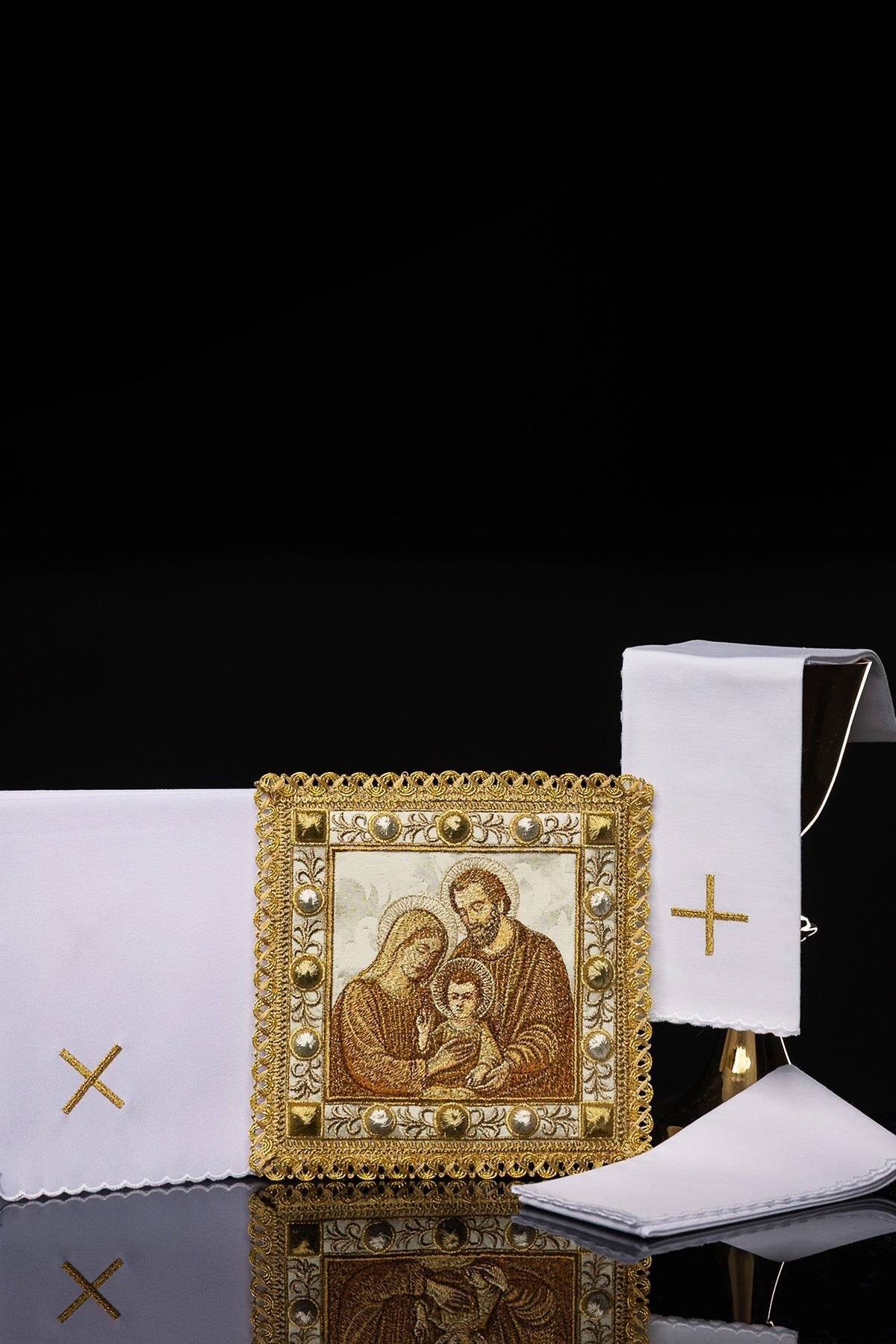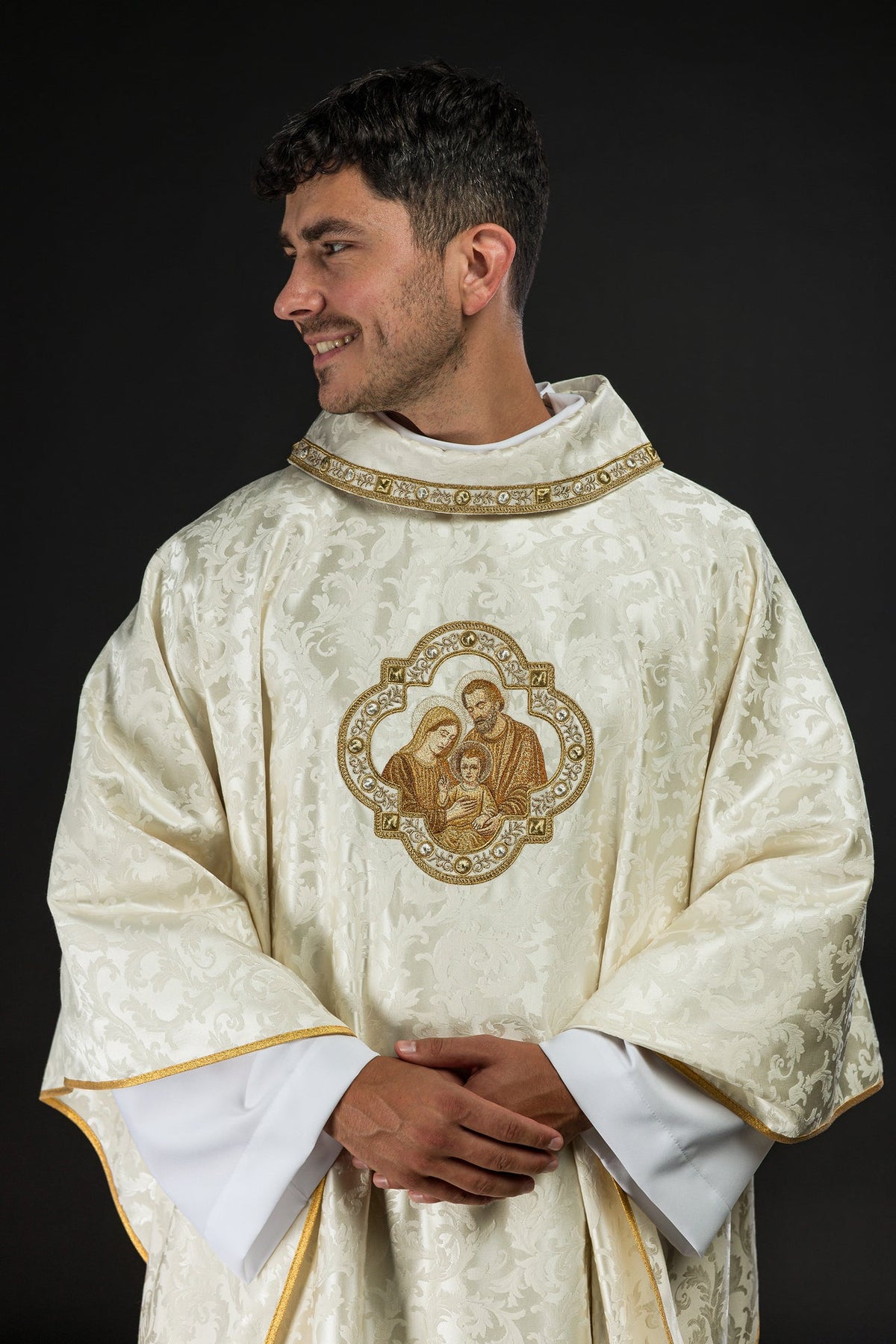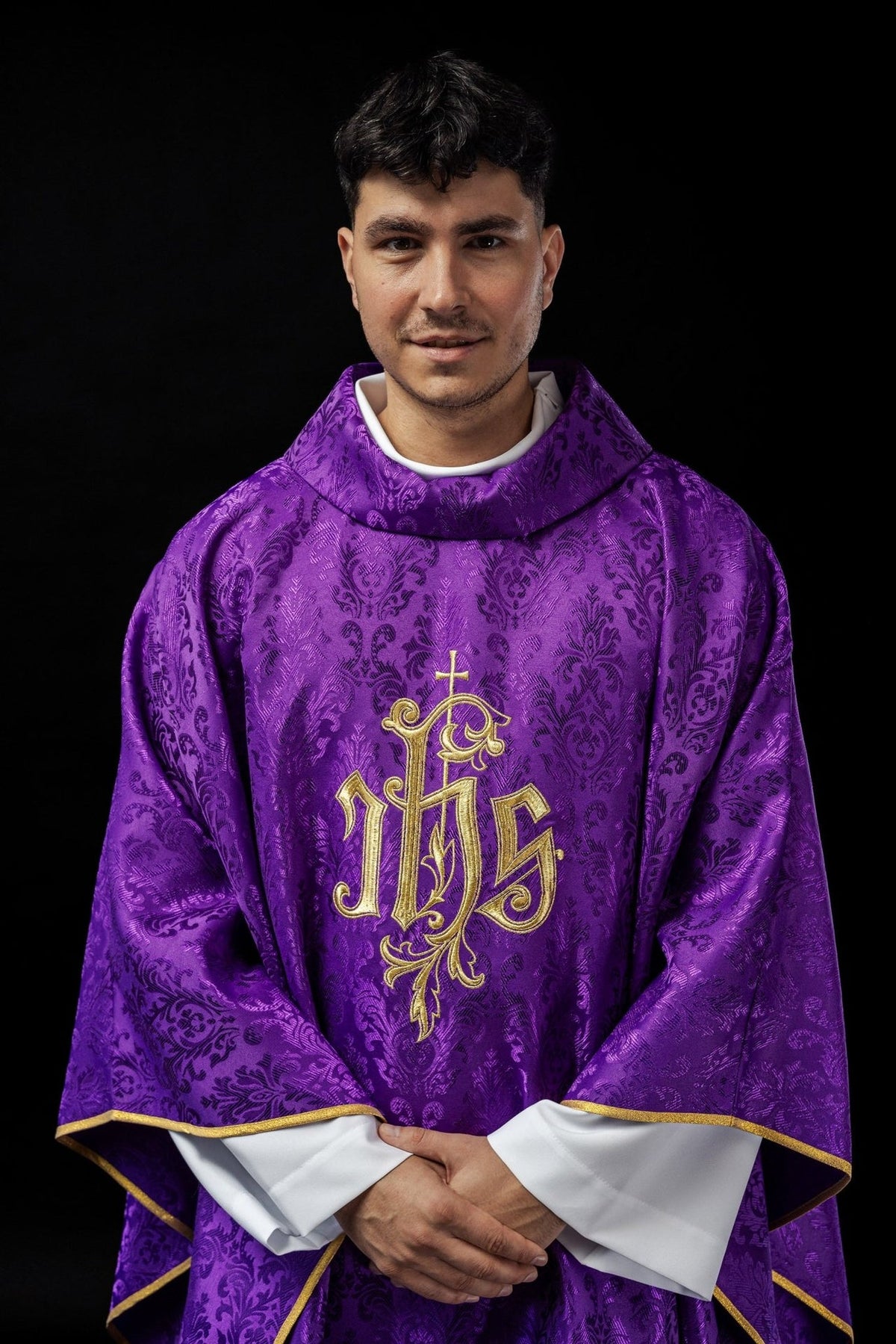The term liturgical vestments generally refers to the attire used by priests of various hierarchies in the context of their participation in church ceremonies and feasts. These garments differ in various characteristics, and in particular vary in color depending on the day and the type of ceremony or feast taking place. What is the difference between a chasuble and a liturgical vestment? Find the answer in our article!
What are liturgical vestments?
Liturgical vestments are much more than mere clothing, more or less ornamental, worn by priests. The very act of wearing them has a very strong symbolic value both for the priest and for those who see him so dressed. They identify him as a representative of God on Earth. For this reason, liturgical vestments must be unique and distinguishable from any other type of vestment that a priest sometimes wears outside of holidays or celebrations. In particular, these vestments belong to the sacred domain, no more or less significant than the prayers and gestures that make up the liturgy and the many rites that characterize religious ceremonies.
Liturgical vestments and chasubles - characteristics
Liturgical garments must be beautiful, well-made and striking. In fact, they are derived from the costumes worn by Greek and Roman dignitaries, who belonged to the richest strata, and demonstrated this through their clothing. The appearance of the earliest Christian priests was related to spirituality, but nevertheless their robes had to express a certain grandeur in order to make their role clearer and more direct to the faithful. Some church vestments are also used outside the liturgical celebration. In general, however, the function of liturgical vestments becomes fundamental precisely in the sphere of religious celebrations, in which they symbolize, on the one hand, the detachment from everyday life, from ordinariness, and on the other hand, the greatness of the priest, who, wearing these special vestments, ceases to be an ordinary man and assumes, in a sense, the functions and identity of Christ. The very form of priestly vestments, often wide, flowing, emphasizes their function.
Types of liturgical vestments
Liturgical vestments can be divided into two types:
- priestly vestments
- vestments of the assistants
Priestly vestments are the vestments that the priest wears when celebrating the liturgy. These include the humerus, alb, belt, vestment, chasuble, stole and cape. The vestments of the assistants are those of the canons, deacons and subdeacons who assist the bishop during the celebration of the liturgy. The dalmatics and tunicela are also among the pontifical paraments of bishops and church dignitaries. High-quality liturgical vestments, artfully crafted and subtly decorated, are offered by our Ornaty.pl store. It is worth getting acquainted with the diverse and constantly expanding offer. The store with liturgical vestments offers the best products at attractive prices.
Chasuble and liturgical vestments
A chasuble is a vestment for the Mass. It is a type of outer vestment used in the celebration of the liturgy. The appearance of the chasuble refers to the ancient traveling cloak. Over the years, its appearance has evolved. For example, Gothic chasubles often had a wide cross excuse on the back, which was richly decorated with embroidery. This kind of decoration has stayed with us to this day, and embroidered chasubles are considered among the most beautiful today. Today, after the conciliar reform, the chasuble is a loose hanging vestment put over the head, wider, hanging not only forward and backward, but also to the sides. A liturgical chasuble consists of a single sheet of fabric with an elliptical shape, with an opening in the middle for the head. In addition, often with an ornate hood and decorated preteens.





1 comment
test